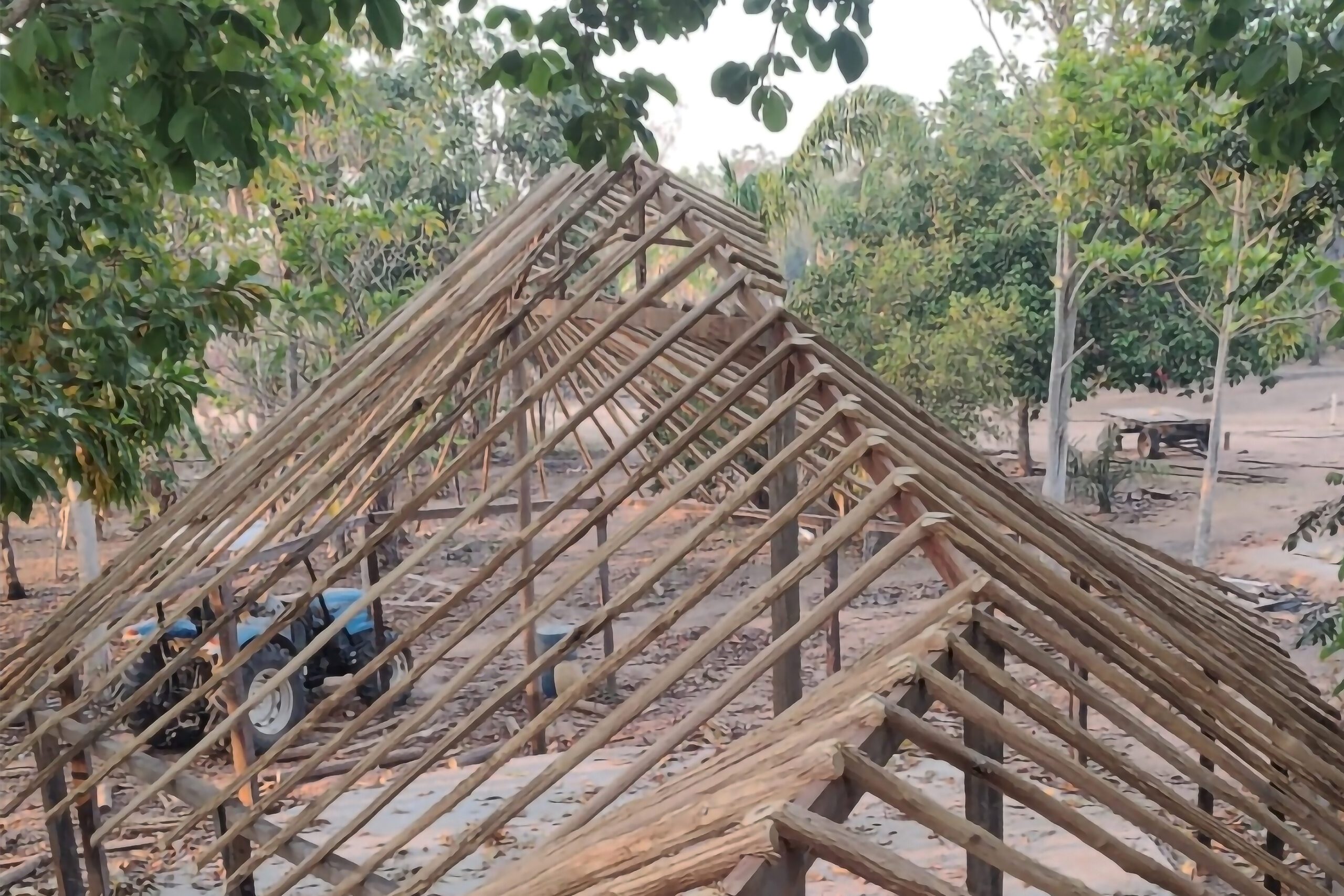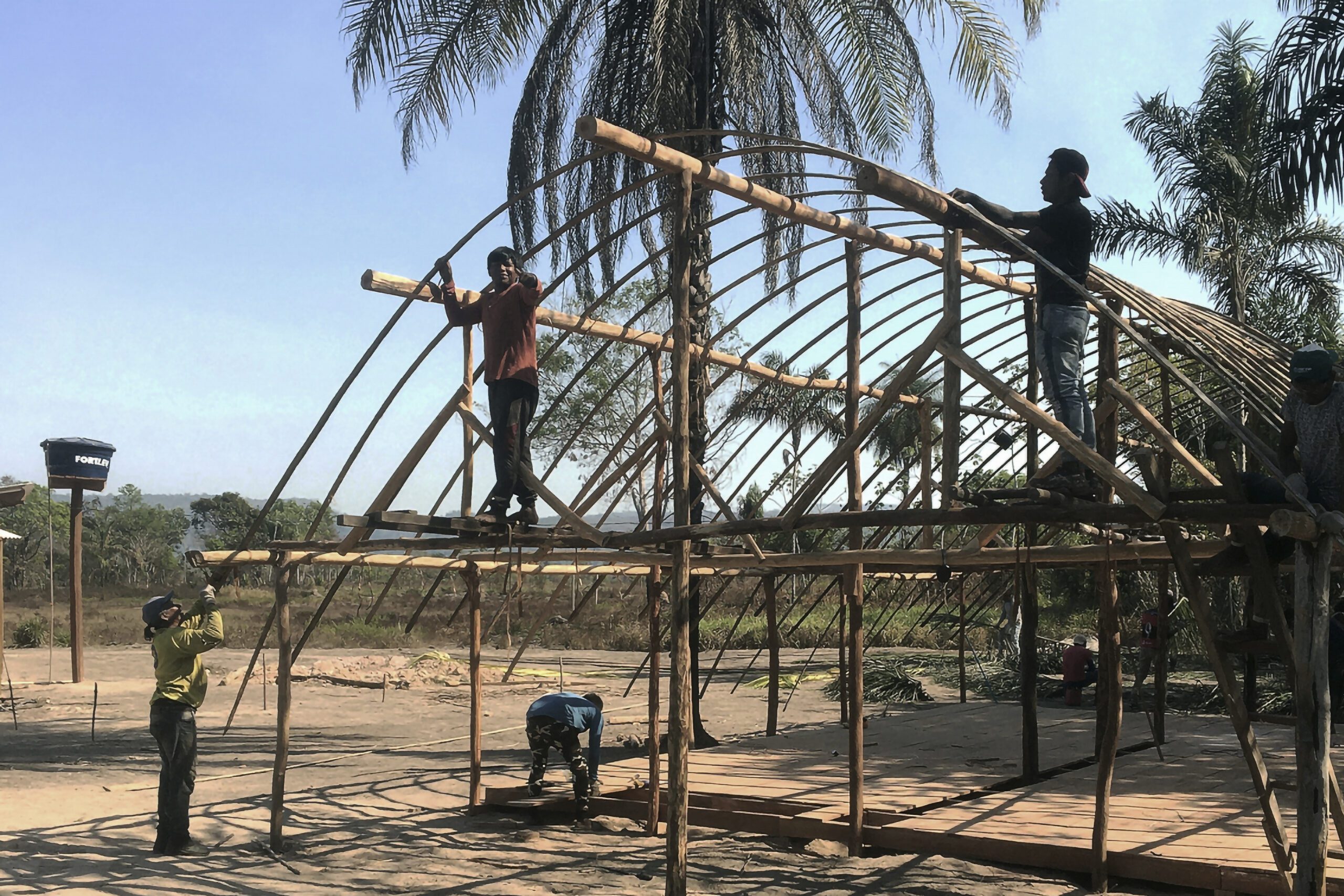Project implementation: Brazil
Project development: Brazil
The landscapes of Mẽbêngôkre villages are undergoing transformation, as anthropologists have recorded over the last century. In 2015, the architects at Estúdio Guanabara were invited to address this dynamic in response to the demand for new non-indigenous homes in 21 Mẽbêngôkre villages. The development of these new kikré—houses, in the language of the Mẽbêngôkre—continued until 2018. During this process, an extensive survey of several villages was conducted, revealing not only the different layouts of the settlements but also the diversity of their constructions: walls of wattle and daub, wood, or masonry, and roofs of straw, zinc, or ceramic.
In the years following the Kikré Project, other initiatives were developed: the Casa do Pajé (Shaman's House), a new building for an ancestral practice, shamanism; and the Casa de Turismo (Tourism House), an ancestral form reinterpreted for a new practice. These experiences have raised questions about the preservation of building traditions, environmental impact, and the adoption of techniques external to Mẽbêngôkre culture. They also prompt reflections on architectural design methodologies in indigenous contexts and, above all, on the autonomy of these people in the construction of their own spaces. By displacing ideas of tradition and cultural identity as something fixed in the past, the Mẽbêngôkre reveal the dynamic dimension of their culture, updating, inventing, and reinventing their living spaces.
This presentation is part of an ongoing doctoral research project at PROURB-FAU/UFRJ, carried out by Luísa Bogossian.




